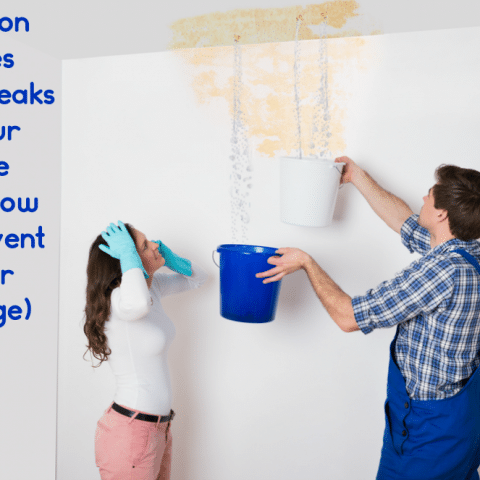Exactly how to Locate and also Repair Work Water Leaks-- A Comprehensive Guide
Exactly how to Locate and also Repair Work Water Leaks-- A Comprehensive Guide
Blog Article
Everybody has his or her own thinking with regards to Locating water leaks.

Early discovery of dripping water lines can alleviate a prospective disaster. Some tiny water leaks may not be noticeable.
1. Analyze the Water Meter
Every house has a water meter. Checking it is a surefire manner in which helps you discover leakages. For starters, switch off all the water resources. Make sure no person will purge, utilize the faucet, shower, run the cleaning machine or dish washer. From there, most likely to the meter and watch if it will certainly transform. Because no person is utilizing it, there need to be no movements. If it moves, that shows a fast-moving leak. If you detect no changes, wait a hr or two as well as examine back once more. This means you may have a slow leak that could also be below ground.
2. Examine Water Consumption
If you identify abrupt modifications, despite your intake being the exact same, it means that you have leakages in your plumbing system. An unexpected spike in your bill indicates a fast-moving leakage.
A consistent increase every month, even with the exact same practices, shows you have a slow-moving leakage that's also slowly intensifying. Call a plumber to completely inspect your building, especially if you really feel a warm area on your flooring with piping underneath.
3. Do a Food Coloring Examination
When it comes to water usage, 30% comes from commodes. If the color somehow infiltrates your dish during that time without flushing, there's a leakage between the container as well as dish.
4. Asses Exterior Lines
Do not neglect to check your outdoor water lines as well. Examination faucets by affixing a garden pipe. Should water permeate out of the link, you have a loosened rubber gasket. Change this and make sure all links are limited. It will certainly assist get it skillfully took a look at and also maintained each year if you've obtained a sprinkler system. One little leak can waste lots of water and also increase your water expense.
5. Examine the circumstance as well as examine
Property owners should make it a practice to inspect under the sink counters as well as even inside cupboards for any bad odor or mold growth. These 2 warnings indicate a leakage so punctual attention is needed. Doing routine inspections, even bi-annually, can conserve you from a significant problem.
Extra significantly, if you recognize your home is already old, keep a watchful eye on your heaters, tubes, pipelines and so on. Look for stainings and also weakening as a lot of pipelines and devices have a life span. They will additionally normally weaken because of tear and also put on. If you suspect leaking water lines in your plumbing system, do not await it to rise. Call an expert plumber immediately so you do not end up with an awful mess in your house.
Early discovery of dripping water lines can minimize a potential disaster. Some small water leaks might not be noticeable. Checking it is a surefire way that assists you find leaks. One little leak can lose bunches of water and spike your water bill.
If you think leaking water lines in your plumbing system, don't wait for it to rise.
How to Know If Your Home Has a Hidden Leak
Water Meter Reveals Inexplicable Water Usage
If you’d like to test whether or not there’s a leak somewhere in your home, you can do this using your water meter. Here is how to conduct the test:
Don’t use any water in your home for at least 30 minutes; this also means not turning on faucets or water-using appliances.
Go outside, and check your water meter for activity.
If your water meter shows that there was activity, even though no one was using any water, this proves that there is a leak in your home.Visible Mold or Mildew Growth
Leaks behind walls create moist, dark environments that allow mold and mildew to grow and thrive. Eventually, you might see mold growth forming on the wall closest to a hidden leak.
If mold is growing in an area that receives a high amount of moisture, such as a bathroom, it may simply be an indication that better ventilation is needed. However, if you see mold growth on a wall or the ceiling in an area where you would not expect, you probably have a hidden leak.
Musty, Mildew Odor
Sometimes you might not be able to see the mold or mildew that is growing as a result of a leak. However, the smell can give the problem away just as easily. If you catch a whiff of something musty, there’s a good chance that old water is collecting somewhere in your home that you can’t see.
Stained/Warped Walls, Ceilings, or Floors
When your home soaks up water, a variety of red flags can become visible, including ceiling stains, bubbling drywall, warped walls, and sagging floors. While these issues can be caused by excess humidity, they can also be signs that a pipe or plumbing connection has started leaking behind your walls.
Inexplicably High Water Bill
After a while, you get a general sense for what your water bill should be. If you own a pool or sprinkler system, your bill will tend to be higher during summer. However, if you receive a water bill that seems especially high, and you can’t figure out what caused it, then you may have a hidden leak somewhere that’s increasing your bill.
https://www.plumbingjoint.com/blog/2019/july/how-to-know-if-your-home-has-a-hidden-leak/

We had been shown that report on Top leak detection hacks from someone on our other web address. Sharing is nice. Helping others is fun. We enjoy reading our article about Top leak detection hacks.
Report this page